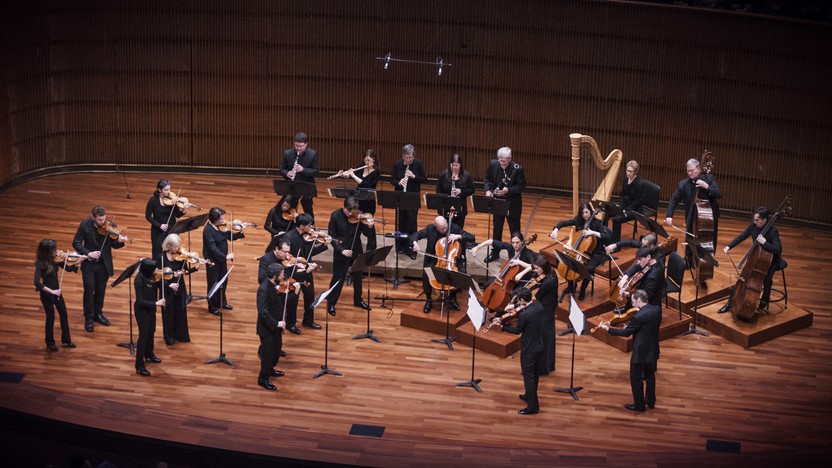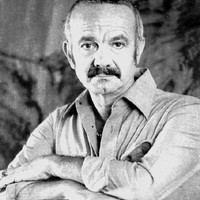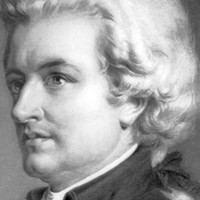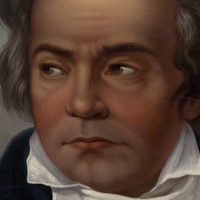Musician Appreciation Concert



The Argentine composer and bandoneón prodigy Astor Piazzolla ranks among his country’s most celebrated composers, and stands without peer in the realm of 20th century tango. His early classical training under Alberto Ginastera (which he pursued while also performing with the leading tango bandleader Aníbal Troilo) led him, in 1954, to study in Paris with the eminent pedagogue Nadia Boulanger. Weary by this time of the tango he had grown up with, and seeking a career as a composer of “serious” classical music, Piazzolla kept his bandoneón hidden away. But on eventually hearing him play his tango Triunfal, Boulanger admonished her pupil, “This is Piazzolla! You never give it up.”
His true artistic identity validated, Piazzolla returned to Argentina, and to tango, with renewed vigor. Reflecting his extensive musical instruction and far-ranging technical expertise, Piazzolla injected traditional tango music with modern chromaticism, elements of jazz, and even fugal technique. Though at first met with disapprovingly by tango traditionalists at home, Piazzolla’s nuevo tango thrived abroad and, eventually, in Argentina as well. By the 1980s, Piazzolla was regarded as tango’s savior.
Piazzolla’s Cuatro Estaciones Porteñas (Four Seasons of Buenos Aires) exemplify Piazzolla’s brand of nuevo tango. Originally scored for Piazzolla’s Quinteto of violin, piano, electric guitar, double bass and bandoneón, the Estaciones Porteñas were conceived as four discrete pieces rather than as a set. Piazzolla composed Verano Porteño (Buenos Aires Summer) in 1965 as incidental music for Alberto Rodriguez Muñoz’s play Melenita de Oro. Otoño Porteño (Autumn) was composed in 1969, with the remaining two Estaciones completed the following year.
The Estaciones Porteñas have become some of Piazzolla’s most popular works; they frequently appear on concert stages as a full suite, and in arrangements for various ensembles, as we encounter them on this program. The Russian composer Leonid Desyatnikov was the first to juxtapose them with Vivaldi’s Four Seasons, as is also now habitually done, arranging Piazzolla’s tangos for solo violin and string orchestra. Certainly, the Estaciones retain their irresistibility in this guise. Delighted listeners are urged to seek out, as further listening, Piazzolla’s own dazzling performances of these pieces with his Quinteto.
Patrick Castillo ©2016

The music that Mozart wrote for his friend Anton Stadler, a clarinetist and fellow freemason, was instrumental in establishing the clarinet as an equal to its older cousins in the woodwind family. Mozart’s first composition for Stadler was the Kegelstatt Trio from 1786, scored for clarinet, viola and piano. (Mozart played the viola part himself.) Next came a quintet for clarinet, two violins, viola and cello, completed in 1789. This work required a basset clarinet in the key of A, an instrument with a low-range extension designed by Stadler. Mozart went on to write Stadler a concerto featuring the same instrument, completed two months before the composer’s untimely death.
The Clarinet Concerto in A Major demonstrates Mozart’s keen understanding of the solo instrument’s range and agility, especially when rendered on a replica of the original basset clarinet, as in this performance. (To play the concerto on a modern clarinet, the player must transpose certain passages into higher octaves.) The tonal quality of the clarinet changes through its range, from the deep resonance of the extended bass notes, through the warm and hollow midrange of the chalumeau register, and up into the brilliant clarity of the highest octaves. At certain points in the fast opening movement, the soloist seems to play several opera characters engaged in dialogue, leaping from range to range; other times, a single scale or arpeggio journeys across all four octaves of the instrument’s compass.
In 1785, a critic wrote of Anton Stadler, “One would never have thought that a clarinet could imitate the human voice to such perfection.” Judging by the slow movement penned expressly for Stadler, Mozart surely agreed!
The finale has a bit of Haydn’s sense of humor in it, as in the playful held notes of the main theme that draw out unresolved tension. The episodic structure of the Rondo allows for fanciful and dramatic excursions, making each return to the familiar music all the more delightful.
Aaron Grad ©2017
 Watch Video
Watch Video
Western classical music is frequently tied to politics, as was the case with Ludwig van Beethoven and several of his symphonies. Most noteworthy, perhaps, was Beethoven’s dedication of his third symphony to Napoleon, which the composer erased upon learning that Napoleon had declared himself emperor. Beethoven’s Symphony No. 7 is also often interpreted as a musical confrontation with Napoleon, whose troops had recently occupied Vienna.
Beethoven composed Symphony No. 7 between 1811 and 1812, at the same time Napoleon was planning his campaign against Russia. The piece was dedicated to Count Moritz von Fries, an Austrian patron of the arts, and the Russian Empress Elisabeth Aleksiev. In December 1813, Beethoven conducted the premiere at the University of Vienna. The event was a charity concert for soldiers wounded in the Battle of Hanau, and Beethoven remarked at the concert’s opening that “we are moved by nothing but pure patriotism.”
The first movement of Symphony No. 7 begins with a long, slow introduction composed of ascending scales. This introduction transitions to the Vivace section through a series of sixty-one repetitions of the pitch E. Dance-like rhythms permeate the entire symphony, including the first theme of the Vivace section. The last few minutes of the movement feature a coda, which contains a remarkable passage of a two-measure motive that is repeated ten times in a row. This repeated motive occurs at the same time as the other instruments play a four-octave pedal point on the pitch E.
So popular that it was encored at the premiere, the second movement of Symphony No. 7 is often performed today as a stand-alone piece. The movement is in ternary form, or three large sections. The first and third sections are composed of similar thematic material and feature a repeated ostinato pattern of a quarter note, two eighth notes, and two quarter notes. These two sections are in the key of A minor, and Beethoven demonstrates his skill with imitative counterpoint in the third section, which is structured as a fugato. The contrasting middle section in A major contains a warm melody in the clarinets, which is accompanied by triplets in the violins.
A scherzo is a musical joke in which humor is created through compositional devices such as unequal phrase structures, disjunct rhythms, alternating meters and unexpected harmonies. Beethoven employs most of these techniques in the third movement of Symphony No. 7, which is divided into five large sections alternating ABABA. The A sections are rhythmically vigorous and composed of jagged, irregular phrases. The B sections contain quotations of the Austrian pilgrims’ hymn.
Symphony No. 7 closes with a movement full of fiery, relentless passion and perpetual motion. The first theme of the movement is a modified version of the instrumental ritornello to Beethoven’s own arrangement of the Irish folk song “Save me from the grave and wise.” Symphony No. 7 was regarded by Beethoven as one of his best compositions, and a newspaper account of an early performance recalled that the “applause rose to the point of ecstasy.”
Paula Maust ©2022
First Annual Musician Appreciation Concert
Deborah Palmer, Event Chair
Please join us for our first annual Musician Appreciation Concert in celebration of the musicians of The Saint Paul Chamber Orchestra, who enrich our community by sharing transformational performances with thousands of people throughout the Twin Cities every year. Join fellow SPCO supporters for this very special celebratory evening where you’ll experience a one-of-a-kind program featuring multiple SPCO musicians as soloists. Net proceeds from ticket purchases for this event will go directly to SPCO musicians in appreciation for the passion, dedication and incredible artistry they share with our community. Don’t miss this opportunity to celebrate and directly support the talented musicians of the SPCO!
Ticket Price/Contribution Levels
Click “buy tickets” to select your own seats from our online seating chart. For access to Gold or Silver Packages or Premium Seats not shown online, please contact Rosie Hughes at 651.292.6988 or rhughes@spcomail.org.
Can’t attend the concert but want to support the SPCO musicians? Click here to make a contribution to this special event.
All who purchase tickets or make contributions to this event by November 12 will be recognized in the concert program as supporters of the event.
Get driving directions and find nearby parking.
Find dining options close to the venue.
View seating charts to find out where you'll be seating.
SPCO concerts are made possible by audience contributions.
For exclusive discounts, behind-the-scenes info, and more:
Sign up for our email club!
